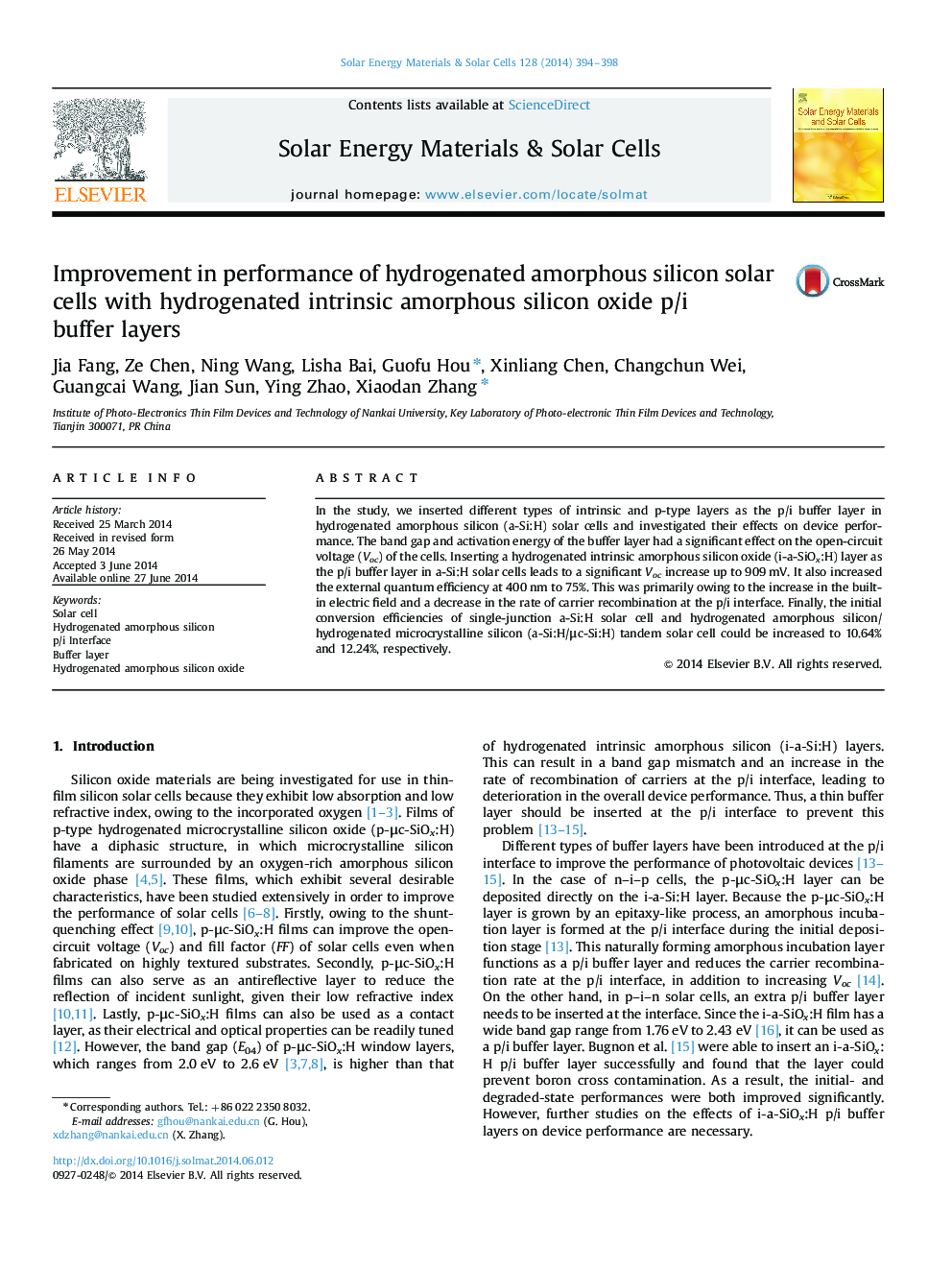| کد مقاله | کد نشریه | سال انتشار | مقاله انگلیسی | نسخه تمام متن |
|---|---|---|---|---|
| 78015 | 49312 | 2014 | 5 صفحه PDF | دانلود رایگان |
• Distinct types of p/i buffer layers were firstly introduced in a-Si:H solar cells.
• Origin of performance improvement with i-a-SiOx:H p/i buffer layer is studied.
• Band gap and activation energy have been intensively examined.
• Initial conversion efficiencies of a-Si:H solar cells reach 10.64%.
In the study, we inserted different types of intrinsic and p-type layers as the p/i buffer layer in hydrogenated amorphous silicon (a-Si:H) solar cells and investigated their effects on device performance. The band gap and activation energy of the buffer layer had a significant effect on the open-circuit voltage (Voc) of the cells. Inserting a hydrogenated intrinsic amorphous silicon oxide (i-a-SiOx:H) layer as the p/i buffer layer in a-Si:H solar cells leads to a significant Voc increase up to 909 mV. It also increased the external quantum efficiency at 400 nm to 75%. This was primarily owing to the increase in the built-in electric field and a decrease in the rate of carrier recombination at the p/i interface. Finally, the initial conversion efficiencies of single-junction a-Si:H solar cell and hydrogenated amorphous silicon/hydrogenated microcrystalline silicon (a-Si:H/μc-Si:H) tandem solar cell could be increased to 10.64% and 12.24%, respectively.
Journal: Solar Energy Materials and Solar Cells - Volume 128, September 2014, Pages 394–398
